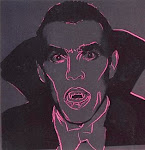Lots of people getting frustrated with this interlude - just as it's all getting exciting at Castle Dracula! This frustration may blind us to the detail that Stoker weaves into the letters... important detail about the heroines of the novel - for yes - there are heroines too!
We have heard mention of Mina and now we find out more. In the first few lines we (had we been reading the novel with the contemporary audience) would have been able to pinpoint her social status. Why? Well, from her occupation: 'assistant schoolmistress' implies that she has few financial resources of her own. Unmarried, yet educated women didn't have that many options for supporting themselves. Notice too her interest in lady journalists - remember our discussions of the 'New Women' surfacing at this time... where does Mina fit into this?
Building on this - we also have reference to shorthand, to stenographs, to the typewriter - all modern inventions at the time! Stoker is trying really hard to plant this in the time in which he is writing - but for what purpose? Why would you do this?
What about Lucy? Several blog posts asking - what's the point in Lucy? Well, look at how she's being established. Very pretty and men seem to be falling over themselves to propose. She's wearing a 'white lawn frock'.... bells should be ringing by now. Think back to 'The Nightmare' by Fuseli and the paintings of the gothic revival: many feature pretty ladies in white dresses, who are ill, or become so... What do you think Lucy's function may become?
Then there's the sleep walking. Remember that psychology is a new science at the time, and people are beginning to research dreams and study the consciousness - again this is aimed at the discerning late Victorian reader! Similarly the inclusion of Dr Seward's diary (which is kept in phonograph) explains his passion for... 'new classification' - think about Darwin - the Victorians are the collectors, the classifiers, the organisers of the natural world. He even makes references to contemporary scientists. Again - what is the purpose? I would suggest it is to make it seem as real as possible - because the more you can associate with, the creepier the unrealistic items become, and the more you begin to question what you know.
So, for modern readers, yes, maybe this is a release of tension... but for the contemporary reader...? Something worth considering in coursework - what would happen if you plunged this into the modern day - things caught on CCTV, posts by email...? Gothic takes the supernatural elements and plunges them into a contemporary setting, making the reader try to separate truth from fiction. The most effective are surely those in which it is hardest to separate the two?

No comments:
Post a Comment